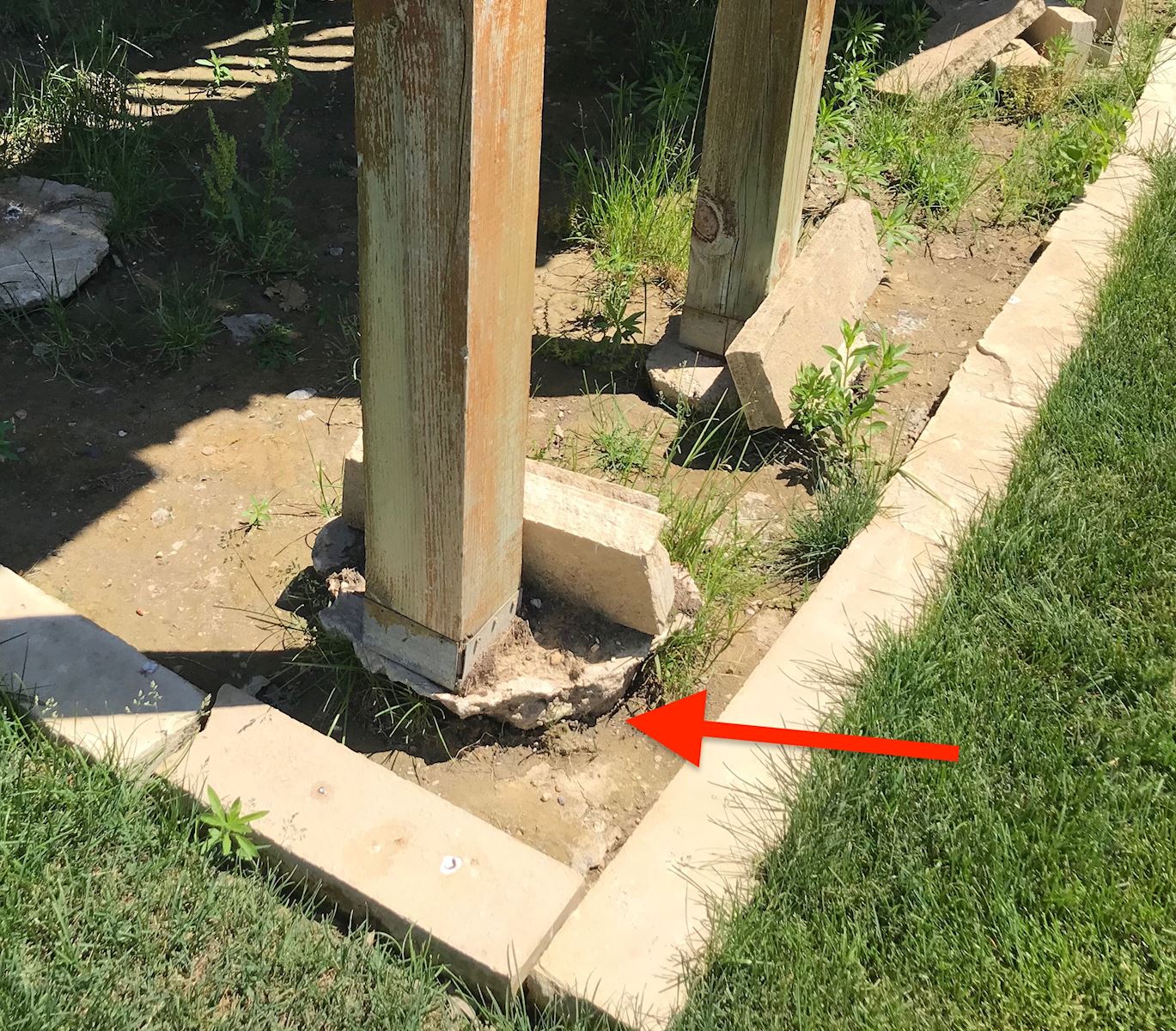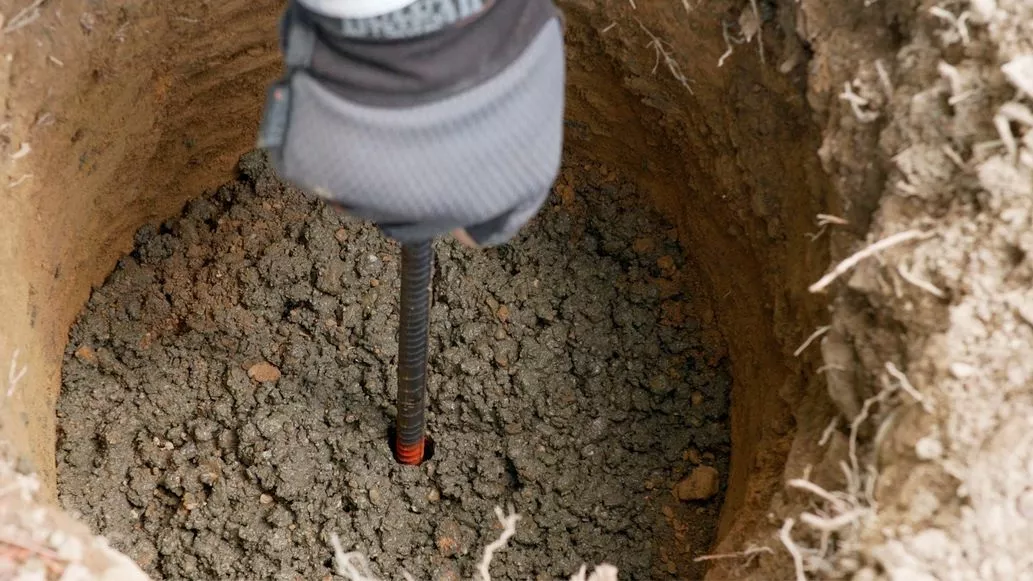Guarantee Security and Longevity With Correctly Mounted Deck Grounds
Deck footings may not be the most attractive aspect of deck building, but they play an essential function in ensuring security and longevity. In this conversation, we will discover the value of correct deck grounds, factors to consider throughout installation, different kinds of grounds offered, step-by-step installation overview, and upkeep tips for ensuring lasting footings.

Importance of Correct Deck Grounds
Why are properly installed deck footings important for the stability and long life of your deck? Deck grounds are the foundation on which the deck rests, moving the lots from the deck to the ground.
Firstly, correctly set up deck footings distribute the weight of the deck equally, preventing any type of uneven settling or sinking. This is especially important in areas with unstable soil, as it helps to alleviate the threat of the deck changing or falling down. Furthermore, well-installed grounds guarantee that the deck remains degree, protecting against any architectural damage that can occur when a deck comes to be uneven.
Secondly, appropriately set up grounds offer a solid support for the deck, preventing extreme activity and sway. This assists to maintain the structural stability of the deck, reducing the danger of mishaps or injuries. It additionally reduces the damage on the deck, enabling it to hold up against the components and normal usage for a longer period of time.
Variables to Consider for Deck Footing Installation
When installing deck grounds, there are several crucial variables to consider for proper installment. Various dirt types have different load-bearing capabilities, so it is important to conduct a soil test to guarantee the footings can sustain the weight of the deck and its owners. By taking into account these aspects, you can make sure the correct installation of deck footings and delight in a lasting and secure deck.
Sorts Of Deck Grounds to Pick From
There are numerous various kinds of deck footings offered for you to select from. Each type has its own advantages and negative aspects, so it's important to consider your specific requirements and the conditions of your deck prior to making a decision.
One typical type of deck footing is the concrete ground. This includes excavating holes in the ground and pouring concrete into them to develop a solid foundation. Concrete footings are sturdy and supply superb security, making them appropriate for decks in areas with tough dirt problems or high wind tons.
Another alternative is the helical pier footing, which contains a steel shaft with helical plates that are screwed right into the ground. These grounds are quick to mount and can be utilized in different dirt types, including sandy or clay soils. They are also flexible, enabling for simple progressing of the deck.
Sonotube grounds are another popular option. These grounds are created by placing a cardboard tube in a hole and loading it with concrete. Sonotube grounds are relatively simple to install and give adequate security for smaller sized decks or in areas with much less demanding soil problems.

When choosing the kind of deck ground, it's vital to take into consideration aspects such as dirt conditions, deck size and weight, neighborhood building codes, and personal preferences. By selecting the appropriate ground type, you can make sure the security and long life of your deck.
Step-by-Step Overview for Putting Up Deck Footings

Establish the area: Start by noting the precise position of each footing making use of stakes and string (Deck Footings). Consider any kind of regional structure codes or guidelines pertaining to trouble distances
Dig the openings: this Utilize a post opening miner or an auger to dig the holes for the grounds. The depth will rely on the frost line in your area and the sort of dirt. Usually, a deepness of a minimum of link 36 inches is advised for stability.
Degree the openings: Guarantee that all-time lows of the openings are degree (Deck Footings). This can be achieved by utilizing a level or a straight board across the top of the holes
Add crushed rock: Area a layer of gravel at the bottom of each opening to improve drainage and stop the footing from sinking right into the dirt over time.
Put the ground forms: Place the footing forms into the holes, ensuring they are centered and level. Use stakes to protect them in position.
Mix and put concrete: Adhere to the instructions on the concrete mix bag to prepare the concrete. Put the concrete into the footing forms, loading them totally.
Smooth the surface: Make use of a trowel to smooth the surface area of the concrete and eliminate any kind of air pockets. Permit the concrete to treat according to the manufacturer's instructions.
Maintenance Tips for Resilient Deck Footings
Correct maintenance is vital for making certain the long life and stability of deck footings. By on a regular basis examining and preserving your deck footings, you can avoid damage and prospective his response safety dangers. One essential facet of maintenance is to routinely examine for any kind of signs of damage, such as cracks or movement in the grounds. If you observe any type of problems, it is essential to address them without delay to prevent further damages.
Regular cleansing is additionally necessary for maintaining deck grounds. Dust, particles, and plant life can collect around the footings, which can result in moisture build-up and degeneration. Cleaning the footings on a regular basis, utilizing a stress or a brush washing machine, can assist protect against these concerns and prolong the lifespan of your deck.
In addition to cleansing, it is essential to keep the location around the footings free from any type of blockages. Prevent piling items versus the footings or enabling plants to expand too near to them. These obstructions can trap moisture and cause the footings to weaken in time.
Finally, normal resealing of the grounds is advised to shield them from wetness and various other ecological elements. Applying a waterproof sealant can assist stop water damage and expand the life expectancy of the grounds.
Verdict
To conclude, appropriate installation of deck footings is essential for making certain security and longevity of your deck. Variables such as soil kind, lots capacity, and regional building regulations require to be taken into consideration when selecting the best sort of deck grounds. Adhering to a detailed guide for installation and routine maintenance will help to ensure the footings continue to be sturdy and durable.
In this discussion, we will check out the importance of correct deck footings, aspects to think about throughout installation, different types of grounds offered, detailed installment guide, and upkeep pointers for making sure durable footings. Deck grounds are the structure on which the deck relaxes, transferring the load from the deck to the ground.One typical kind of deck ground is the concrete ground. Put the ground types: Insert the ground forms into the holes, ensuring they are focused and degree.In verdict, proper installment of deck grounds is important for guaranteeing security and long life of your deck.